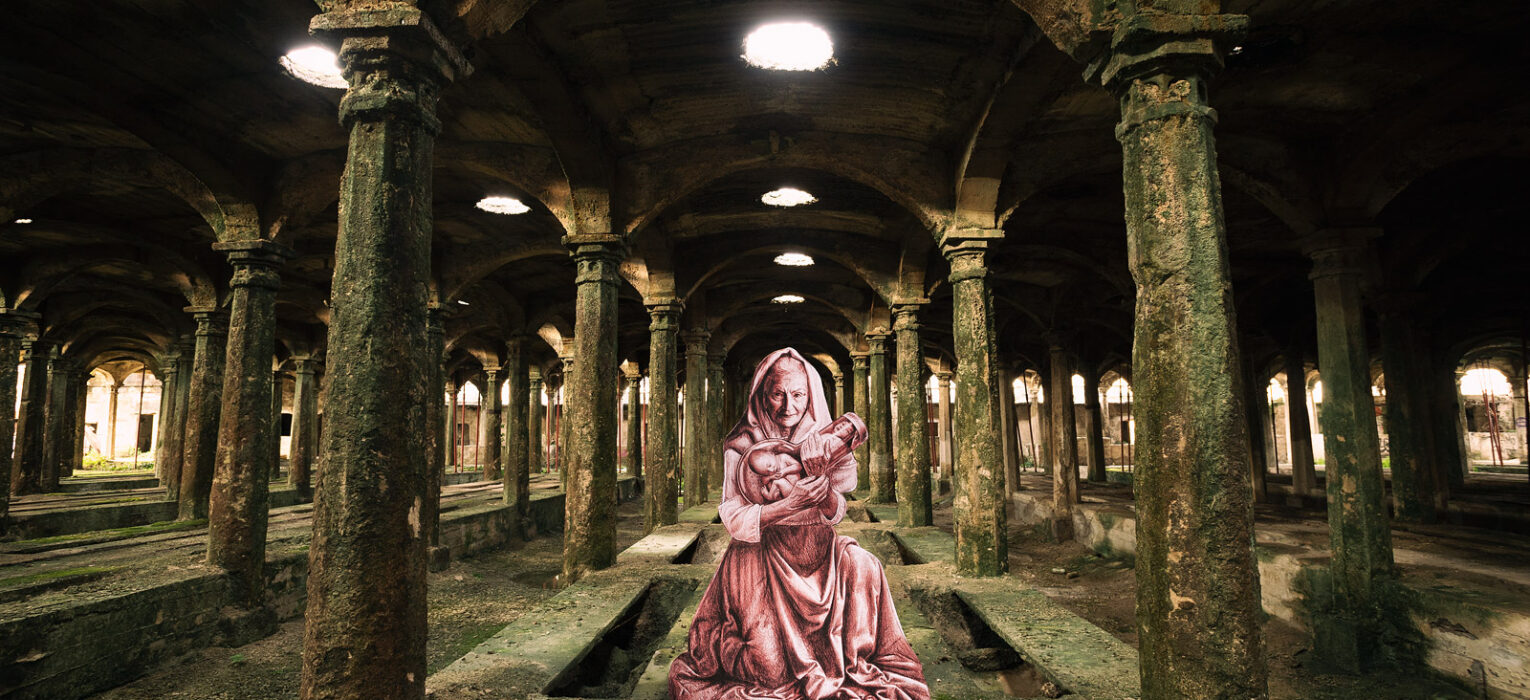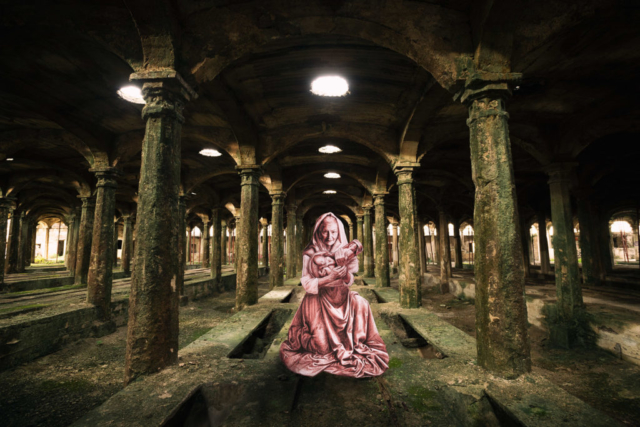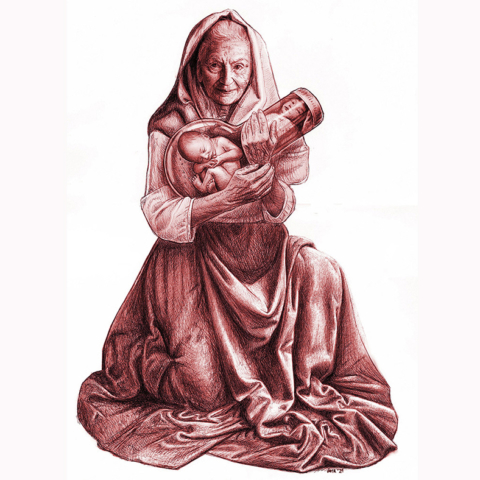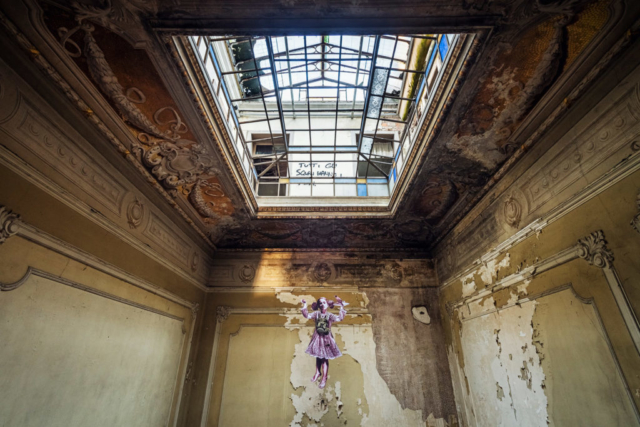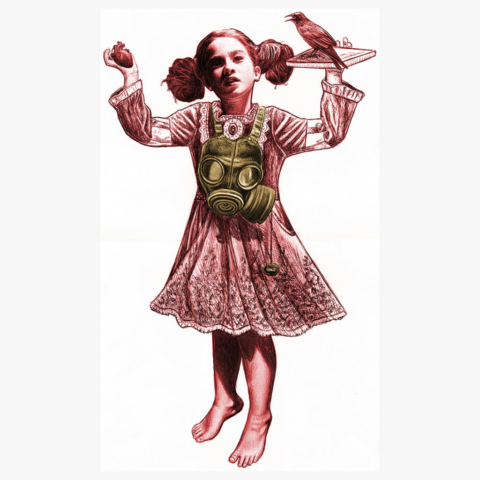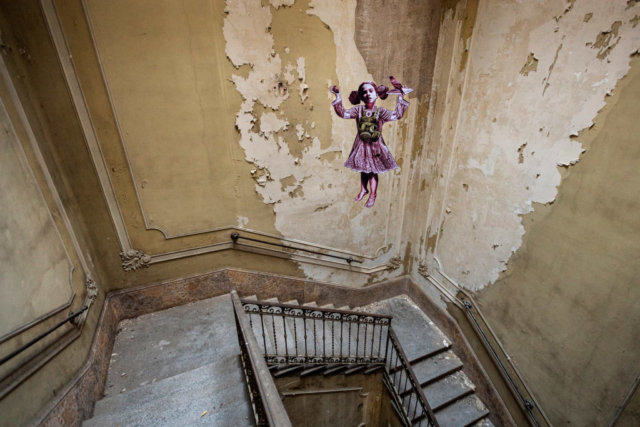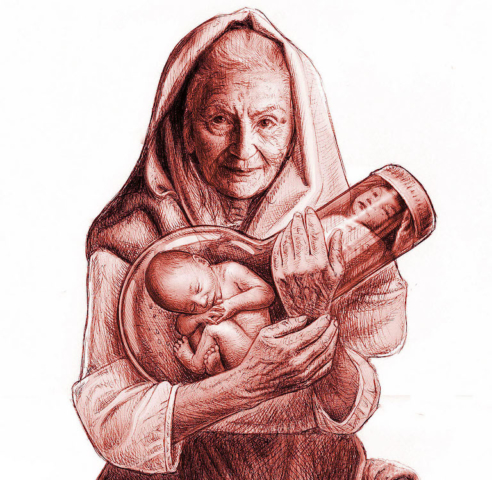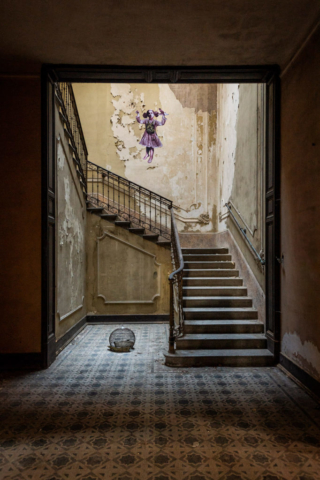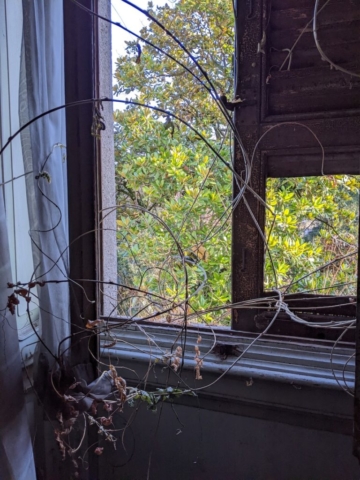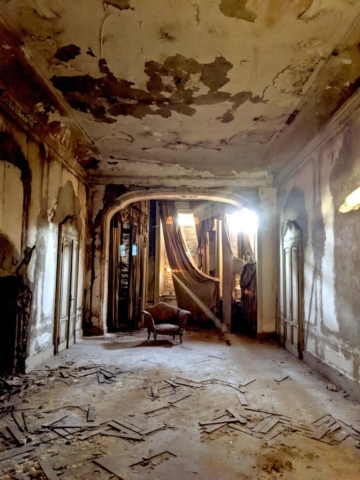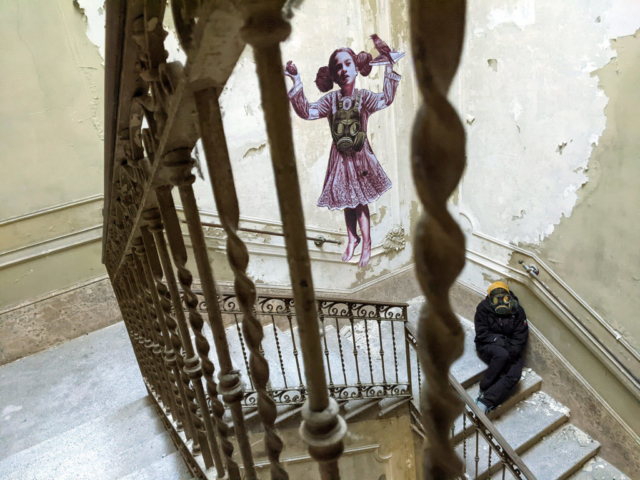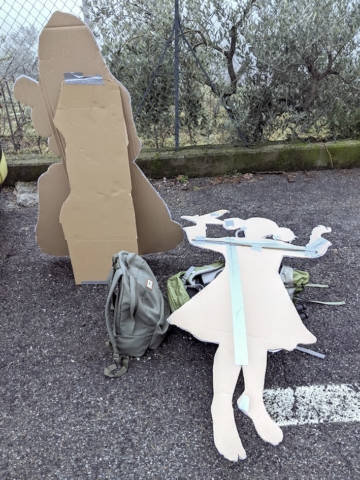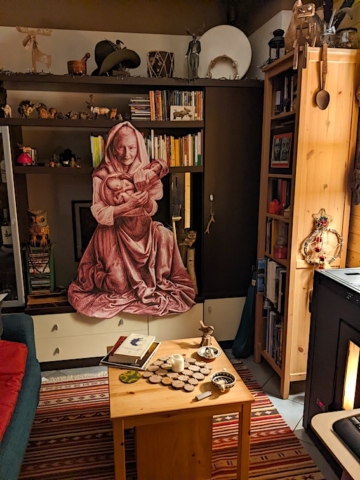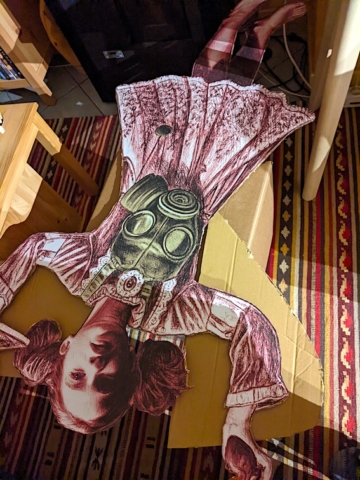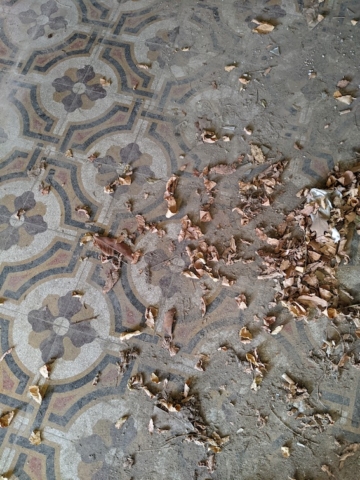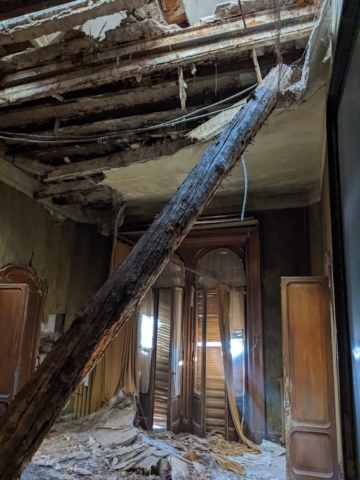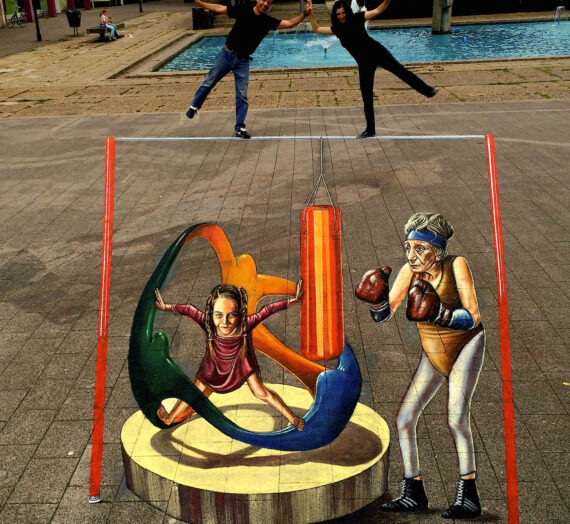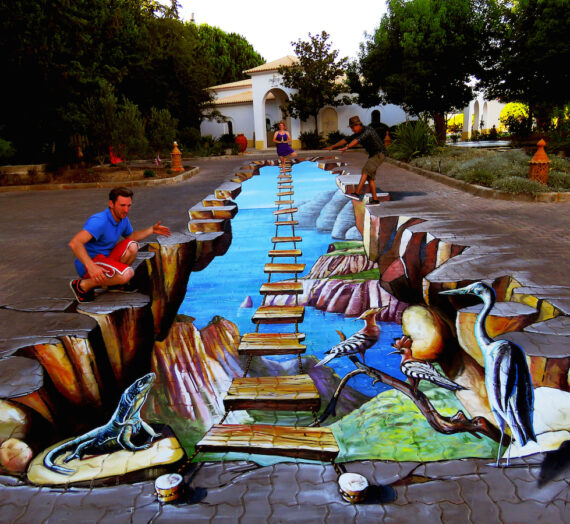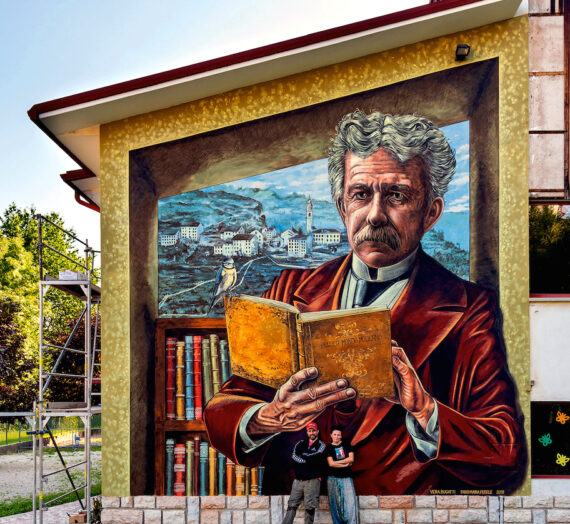A volte ritornano, spesso sono cortocircuiti.
Viaggi introspettivi senza protezioni, nei passaggi salienti della vita, alla ricerca di nuove angolazioni. Piccole incursioni che generano opere autobiografiche, monocrome come ogni catarsi.
È passato un mese dall’installazione dei miei due ultimi pezzi in luoghi abbandonati.
Provo a raccontarveli senza essere prolissa (si, stavolta sono incredibilmente seria).
Da un anno tento di raccogliere frammenti di me stessa ma mi perdo inevitabilmente nel frastuono mentale. Cerco il vuoto e trovo seducenti e impervi gineprai, corridoi che temo, diarroici pretesti.
Ogni tanto ho bisogno di una eco forte che funga da contraltare rispetto ai grandi pezzi su parete, ai colori brillanti e alle tematiche sociali, una terapia intima che generi come scintille piccole opere monocrome e interrogative, soprattutto effimere.
I primi pezzi dedicati a siti abbandonati sono nati nel 2019, una risposta ad alcune sofferenze fisiche e prove della vita. Ogni volta che ne affronto una è necessaria una catarsi che mi porti a trasformare le paure in energia vitale. Ovviamente non raggiungo mai l’obiettivo e oggi provo più timore che mai.
Se due anni fa la ricerca mi aveva portata ad approfondire tematiche legate alla malattia mentale, ora sono approdata (o tornata?) alle questioni ontologiche e alle amate elegie inquiete del tempo. In fondo in tutti questi personaggi ci sono io, posso farci poco!
Vi risparmio il pathos del resoconto rocambolesco e buffo di come sono entrata in questi luoghi abbandonati (posso solo dire che sono siti lombardi).
Fortunatamente non ero sola a trasportare le opere altrimenti sarei ancora sospesa su qualche muretto… ma veniamo alle opere!
“Dissimilazione o del venire al mondo” campeggia in una sorta di cattedrale dell’archeologia industriale, un sito freddo e umido invaso dall’edera.
Una donna anziana e velata, con sontuoso abito, è accucciata in una sorta di cripta inondata dal muschio e ci guarda. Fra le mani regge una sorta di lampadina alchemica con tappo di sughero che contiene due neonati. Il primo galleggia sognante nel liquido amniotico mentre il secondo è schiacciato nel collo dell’ampolla che gli deforma il viso.
Per venire al mondo è costretto ad un trauma e pare impossibile possa attraversare l’angusto passaggio. Quanti condizionamenti sono già presenti alla nascita?
Si definisce dissimilazione linguistica il mutamento di un suono per effetto della presenza di un altro uguale o simile nella stessa parola mentre, in psicologia sociale, il medesimo termine significa l’opposizione al processo di accettazione da parte di alcuni componenti di un gruppo, che difendono i propri modelli sociali o culturali.
Il venire al mondo in questo senso è l’affrontare la fatica di una complessa e drammatica assimilazione.
L’opera però aspira ad essere bifronte.
Se si trattasse al contrario di un ritorno all’origine e il feto compresso venisse nuovamente accolto dall’acqua? Se entrambi fossero lo stesso bambino? Soprattutto, chi è la canuta sibilla serafica che non può essere madre? Custodisce i feti oppure ne opera una strana criogenesi?
Vale sempre l’ardua esortazione nosce te ipsum (ma poi se riesci scappa).
“Coeur-Vus” fluttua sul vano scala di una villa abbandonata, proprio sopra ad una gabbietta aperta. Una bambina è sospesa sotto un grande lucernario e si muove leggermente quando incontra il vento. Guarda in alto e mezzo volto è in penombra, fa fatica a tenere aperti gli occhi per la forte luce che la investe da un lato. Le braccia alzate ricordano iconografie sacre di martiri e immagini di reportage che testimoniano dramma.
Lei però è serena, sorpresa. Sulle sue mani aperte trovano accoglienza un cuore e un corvide appollaiato su una tavoletta (o un libro?). L’uccello guarda il cuore e apre il becco, la gabbia è aperta.
Il corvo è spesso associato a presagi di morte ma è anche simbolo di conoscenza profonda e portavoce dell’inconscio. Il cuore stesso nell’antichità era considerato sede della mente umana, custode di pensieri ed emozioni.
Corvo e cuore sono nell’opera la stessa sostanza, definiti dal gioco di parole Coeur-vus: il corvo è il cuore visto. Pare semplice, detta così.
Eppure se ci si sente leggeri fluttuando nel vuoto in forma d’infante, si incappa spesso in una sorta di apnea che a tratti seda a tratti soffoca. Allora si indossa la maschera antigas, protezione a breve termine, che ci trasforma e trasfigura in altro da noi.
Entrambe le opere sono un tentativo di conoscermi, come anziana e bambina, prima e dopo la nascita, prima e dopo la morte. Certamente i problemi di salute degli ultimi anni sono stati il motore per creare questi pezzi, una terapia alternativa parallela a quella medica, un disperato viaggio di ricerca della consapevolezza.
Non ho fatto grandi progressi, ma il viaggio continua, siamo in fondo resistenza e resa.
Grazie a chi ha avuto la pazienza di leggermi fino a qui.
Le fotografie sono di Andrea Zampatti.
Grazie infinite a Matteo @derelictio per avermi fatto conoscere questi luoghi.
(English text)
Sometimes they come back, often they are short circuits.
Introspective journeys without protection, in the salient passages of life, in search of new angles. Small forays that generate autobiographical works, monochrome like any catharsis.
A month has passed since the installation of my last two pieces in abandoned places.
I try to tell you without being verbose (yes, this time I’m incredibly serious).
For a year I have been trying to collect fragments of myself but I inevitably lose myself in the mental din. I look for emptiness and I find seductive and impervious junipers, corridors that I fear, diarrheal pretexts.
Every now and then I need a strong echo that acts as a counterpoint to the large pieces on the wall, bright colors and social themes, an intimate therapy that generates small monochromatic and interrogative works like sparks, especially ephemeral.
The first pieces dedicated to abandoned sites were born in 2019, a response to some physical suffering and trials of life. Every time I face one, a catharsis is needed that leads me to transform fears into vital energy.
Obviously, I never reach the goal and today I am more afraid than ever. If two years ago the research led me to investigate issues related to mental illness, now I have landed (or returned?) To the ontological questions and the beloved restless elegies of the time. After all, then in all these characters there is me, I can do little about it.
I spare you the pathos of the daring and funny account of how I entered these abandoned places (I can only say that they are Lombard sites).
Fortunately I was not alone in transporting the works otherwise I would still be suspended on some wall … but let’s come to the works!
“Dissimilation or coming into the world” stands out in a sort of cathedral of industrial archeology, a cold and humid site invaded by ivy. An elderly, veiled woman, in a sumptuous dress, is crouched in a kind of moss-flooded crypt and she looks at us. In her hands he holds a sort of alchemical light bulb with a cork that holds two babies. The first floats dreamily in the amniotic fluid while the second is crushed in the neck of the ampoule and his face is deformed. To come into the world, she is forced to a trauma and it seems impossible for her to cross the narrow passage.
How many conditionings are already present at birth?
Linguistic dissimilation is defined as the change of a sound due to the presence of another equal or similar in the same word while, in social psychology, the same term means the opposition to the assimilation process by some members of a group, who defend their social or cultural models. Coming into the world in this sense is facing the effort of a complex and dramatic assimilation. However, the work aspires to be two-faced.
If, on the contrary, it was a question of a return to the origin and also the compressed fetus was again welcomed by water? What if they were both the same baby? Above all, who is the white seraphic sibyl that cannot be a mother? Does it guard the fetuses or does it perform a strange cryogenesis? The arduous exhortation nosce te ipsum always applies (but then run away if you can).
“Coeur-Vus” floats on the stairwell of an abandoned villa, right above an open cage. A young girl is suspended under a large skylight and she moves slightly when she meets the wind. She looks up and half her face is in dim light, she finds it hard to keep her eyes open for the strong light that hits her from one side. Her raised arms recall sacred iconographies of martyrs and reportage images that testify to drama. But she is serene, surprised.
On her open hands a heart and a corvid perched on a tablet (or a book?) are welcomed. The bird looks at the heart and opens its beak, the cage is open. The crow is often associated with omens of death but is also a symbol of profound knowledge and a spokesperson for the unconscious. The heart itself in ancient times was considered the seat of the human mind, guardian of thoughts and emotions.
Crow and heart are the same substance in the work, defined by the play on words Coeur-vus: the crow is the seen heart. It seems simple, so called.
Yet if you feel light floating in the void in the form of an infant, you often run into a sort of apnea that at times sedates and at times suffocates. Then we put on the gas mask, short-term protection, which transforms us and transfigures us into something else.
Both installations/works are an attempt to get to know me, as an old woman and a child, before and after birth, before and after death. Certainly, the health problems of the last few years have been the engine to create these pieces, an alternative therapy parallel to the medical one, a desperate journey of awareness.
I haven’t made much progress, but the journey continues, we are basically resistance and surrender. Thanks to those who have had the patience to read me up to here.
